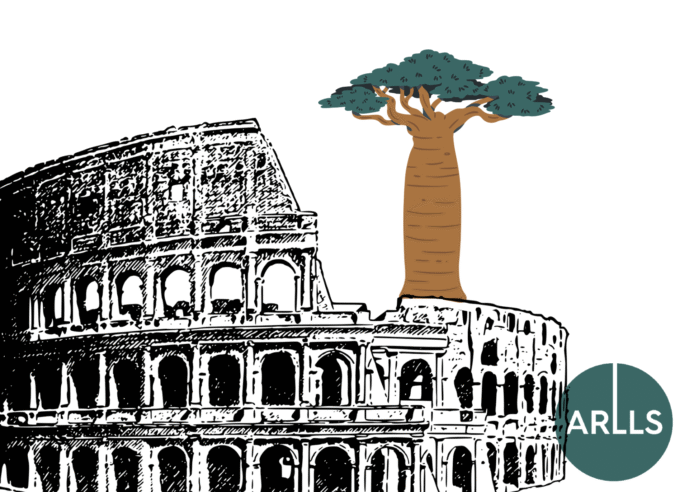We mourn the dead with flowers, names, and silence. But when it comes to ancient civilisations, there are rarely names left, only stones, stories, and the ache of brilliance lost. We walk through the ruins of cities like Memphis or Mohenjo-Daro, marvelling at what they built. But rarely do we pause to mourn what held them together. Not just intelligence, but intelligence governed. Leadership that was not loud, but lasting. Not always centralised, but always essential.
When historians speak of the world’s first civilisations, Mesopotamia, the Indus Valley, Ancient Egypt, and the Olmecs, they often begin with agriculture, trade routes, or early writing systems. Seldom do we pause to ask this essential question: What kind of leadership made it possible to organise thousands of strangers into cities, long before plumbing, police, or centralised currency existed?
Between 4,000 and 2,000 BCE, human beings undertook one of the most extraordinary coordination feats in history. They built great civilisations with mortar, asphalt, and shared belief. One of legacy. With no treaties to rely on, no bureaucracies to delegate to, no digital systems to scale, they created irrigation networks that sustained empires like Ancient Greece’s aqueducts, temples that mirrored the constellations like the Pyramids of Giza, and calendars accurate to the day, think of the Maya Calendar. These weren’t accidents of geography or anomalies of brilliance. They were the result of intentional leadership.
And while we’ve inherited their ruins, we’ve rarely inherited their reasoning.
We remember the monuments, but overlook the mindset.
Leadership Wasn’t Always a Ladder
Today, leadership often wears a corporate face, titles, targets, and chains of command. But early civilisations, from the kingdom of Axum to the Indus Valley, followed a different script. Leadership wasn’t about extraction. It was about equilibrium. It wasn’t about commanding others. It was about carrying responsibility.
In many indigenous cultures, leadership was a sacred trust, not a personal prize. Power was earned through service, not assertion. One rose not by ascending above others, but by becoming deeply accountable to them.
That’s a lesson our modern institutions are still slow to absorb. For various respective reasons.
Take the Gadaa system of the Oromo people in Ethiopia, for example. Dating back over 500 years, and recognised by UNESCO as an Intangible Cultural Heritage of Humanity, Gadaa divided leadership into generational cohorts, where power rotated every eight years through rigorous processes of ethical training, public accountability, and communal endorsement (Gadaa System, UNESCO 2016). Leadership here was earned through moral apprenticeship, not ambition.
Likewise, the Inca Empire governed one of the largest empires in pre-Columbian America without a formal writing system. Their “quipu”, an intricate method of knot-tying across coloured cords, functioned as both an administrative ledger and a mnemonic device for relaying messages over thousands of kilometres (Ancient Worlds Archive). This decentralised intelligence system allowed for remarkably efficient tax collection, agricultural planning, and census data (Lumen Learning “Administration of the Inca Empire). Yet it wasn’t just the tools that mattered; it was the worldview: information was held as a shared responsibility, not hoarded for private advantage.
In Ancient Egypt, pharaohs were not merely rulers; they were embodiments of Ma’at, their believed cosmic principle of truth, order, and justice. Kingship wasn’t a right to exploit, but a duty to restore balance between the heavens and the Nile. As historian Jan Assmann notes, Egyptian political theology embedded moral legitimacy into every level of governance, “a reign not of fear, but of cosmological coherence” (Assmann 2011). Leadership wasn’t as simple as a position of servitude, but a form of sacred self-sacrifice ordained from above.
This stands in sharp contrast to today’s “strongman” fixation, where power is concentrated, cyclical, and often performative, with accountability to systems. We tend to confuse visibility with vision. Charisma with credibility. Applause with authority.
To us, leadership is a position of servitude and an opportunity for visibility. A chance to be great, to be the heroes that exist in everyone’s stories. We want to close our eyes before bed and know we matter, really matter. Today, we crave to be recognised, admired, even mythologised. There’s nothing inherently wrong with that. But it’s precisely this desire that may be obscuring a deeper kind of legacy. One of giving, investing in a future you may never live to see.
We Keep Making Mistakes They Didn’t
Modern leadership culture claims to be evidence-based, agile, and scalable. And yet many of our institutions remain brittle, performative, and reactive. What we call “strategic foresight” is often little more than quarterly survival. What we celebrate as “bold leadership” is frequently the art of maintaining appearances. Again, this isn’t inherently wrong, and may be better suited for the times; however, is it the most efficient means of leadership?
Ancient systems, with none of our technologies, built governance models that were not extractive, but regenerative. Resilient, not rigid. They didn’t just manage resources, they managed meaning.
In many Polynesian societies, the role of ariki (chief) was embedded in genealogy but legitimised through service. Chiefs were expected to host, protect, listen, and provide, not rule from above, but lead from within. The power of a chief was measured not by fear, but by the harmony of the group.
Similarly, in the Iroquois Confederacy (Haudenosaunee), one of the oldest participatory democracies in the world, decisions were made through consensus, and leadership roles included Clan Mothers, women who held the power to appoint or depose male leaders based on moral conduct. This model inspired aspects of the U.S. Constitution, a fact rarely acknowledged in leadership textbooks today (Library of Congress, 2023).
And Shaka Zulu, often remembered as a military tactician, also restructured the Zulu nation by introducing regimental discipline and centralised military-age cohorts. While some of his methods were brutal, his reforms also created a shared national identity, fusing fragmented clans into a strategic and organised force. Power was not ornamental; it was operational. Unity transcended differences.
This relational view of leadership echoes the Ubuntu philosophy. As noted in Dr. Vanessa Iwowo’s personal reflection on African leadership traditions, and timely, given her attendance at our recent LSE x PfAL ARLLS masterclass (Wed 30 July), “if we consider Ubuntu as premised on values such as ‘collective responsibility’ and ‘empathy’, we may say that the leader, rather than being systematically dislocated from the experience/s and destiny of the ‘led’, is arguably, part and parcel of the latter, in that both share a common reality, regardless of any power differential or hierarchy that may/may not exist. In this, the leader is one with the led because first and foremost he or she emerges from among them and as such, is no stranger to their experiences”(Iwowo, 2016, p. 7).
In such a model, leadership is not distance; it’s proximity. Not performance, but presence. Power does not alienate; it integrates. This worldview stands in stark contrast to many modern systems, where leaders often drift further from the communities they claim to serve.
Our modern leadership culture often ignores the psychological truths that indigenous models understood intuitively: that people follow what they trust and believe, not what they fear and not leadership they feel they owe. That legitimacy is earned in silence as much as in speech. That durability requires depth.
It’s also important to note that indigenous societies often avoid the concentration of power, using cultural mechanisms like ridicule, rotation of leadership, or ritual to prevent domination, and emphasise an egalitarian leadership style (Clastres 1987). This is all to prioritise a unified momentum, not an authoritative one. One lasts millennia, the other crumbles within decades. We’ll let you decide on that one.
As Zaheera Rajab, an ARLLS facilitator, insightfully puts it in a past article, “We don’t just teach leadership, we’ve engineered learning experiences that ignite leadership skills and have used academic theory to do it.” (Rajab, 2025). In many ways, that mirrors what ancient systems practised without needing theory, an embodied pedagogy. From the Gadaa’s moral apprenticeship to Polynesian chiefs’ lived legitimacy, these civilisations taught leadership through structure, service, and reflection, not spectacle. What ARLLS does today, with its research-backed, community-rooted design, is not a break from tradition, but a return to it. A return to leadership that’s earned, not granted. Learned, not mimicked.
We Remember Not to Preserve but Uphold
The most revered leaders in many indigenous societies were those who spoke the least, listened the longest, acted the strongest, and made others feel most valued. That wasn’t just firm power. It was sustained power. Regenerative power, that made the leader next in line aim to live up to a legacy that predates generations.
So for now, we’ll keep visiting the seven wonders, reading ancient texts and scavenging through our history in search of a better future.
And perhaps the greatest loss wasn’t the cities that crumbled, but the leadership philosophies buried with them. Not vanished. Just waiting to be remembered.
At ARLLS, we don’t worship the past, but we listen to it. Because the future doesn’t need louder leaders. It needs wiser ones.
So we teach leadership not as domination, but as direction. Not as control, but as coherence.
We believe tomorrow belongs to those who can hold both memory and momentum, those who can look forward, while reaching back.
If that sounds like you, or the leader you want to become, join us. Subscribe to the ARLLS newsletter, and be a part of something older than ambition, and bolder than tradition.
If you are already a part of our community, thank you for joining us in our journey to harness the leaders of tomorrow, today. Reach out to us! We always love engaging with our community.
Until the next post.
Works Cited List
“Administration of the Inca Empire.” Lumen Learning: World Civilization. https://www.lumenlearning.com/suny-hccc-worldcivilization/chapter/administration-of-the-inca-empire.
Assmann, Jan. Cultural Memory and Early Civilization: Writing, Remembrance, and Political Imagination. Cambridge University Press, 2011.
Clastres, Pierre. Society Against the State: Essays in Political Anthropology. Zone Books, 1987. https://www.zonebooks.org/books/102-society-against-the-state-essays-in-political-anthropology.
Iwowo, Vanessa. Personal Review. Leadership in Africa: Re-thinking Development, April 2016, London School of Economics.
Library of Congress. “The Haudenosaunee Confederacy and the Constitution.” In Custodia Legis, U.S. Library of Congress, Sept. 2023, blogs.loc.gov/law/2023/09/the-haudenosaunee-confederacy-and-the-constitution.
Rajab, Zaheera. From Neuroscience to Heart: How ARLLS Turns Research into Real‑World Leadership. ARLLS, 2025, https://arlls.com/blog/from-neuroscience-to-heart/. Accessed 28 July 2025.
“Understanding the Inca Social and Political Organization.” Ancient Worlds Archive. https://www.ancientworldsarchive.com/inca-social-and-political-organization. UNESCO. “Gada System, an Indigenous Democratic Socio‑Political System of the Oromo.” Representative List of the Intangible Cultural Heritage of Humanity, 2016. https://unesco.org/cgi/enRL/gada-system-01164. Accessed 28 July 2025.



